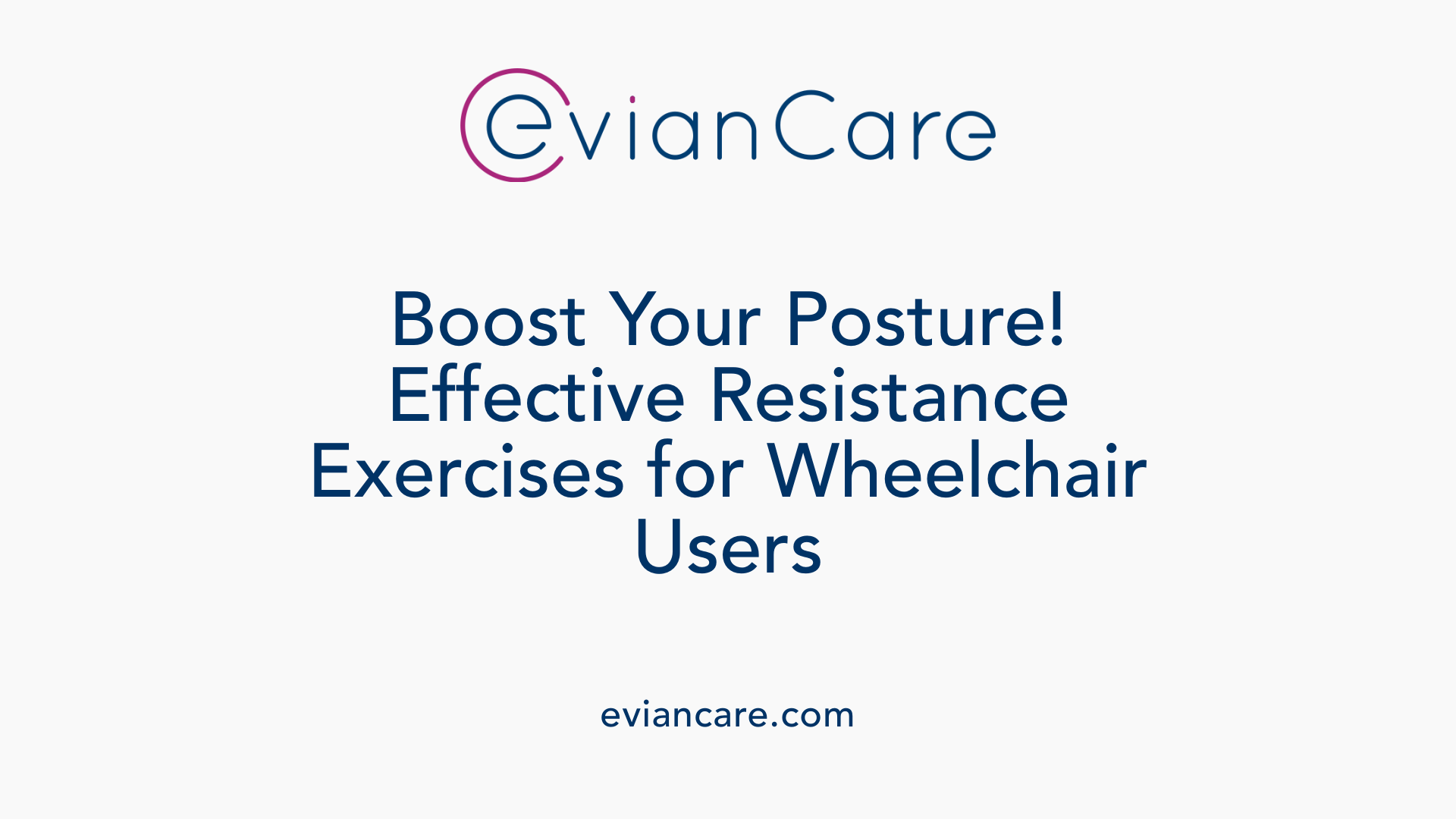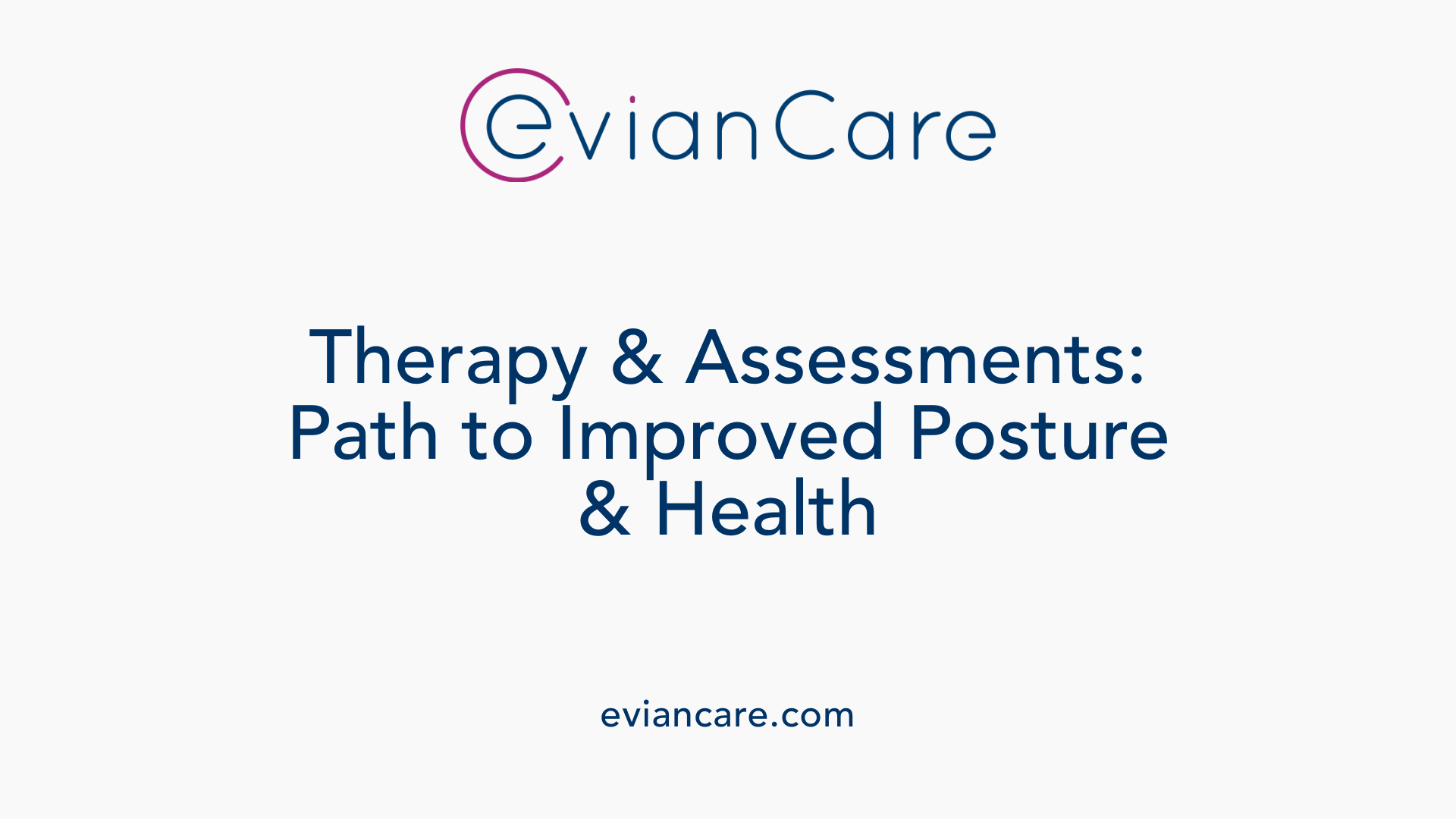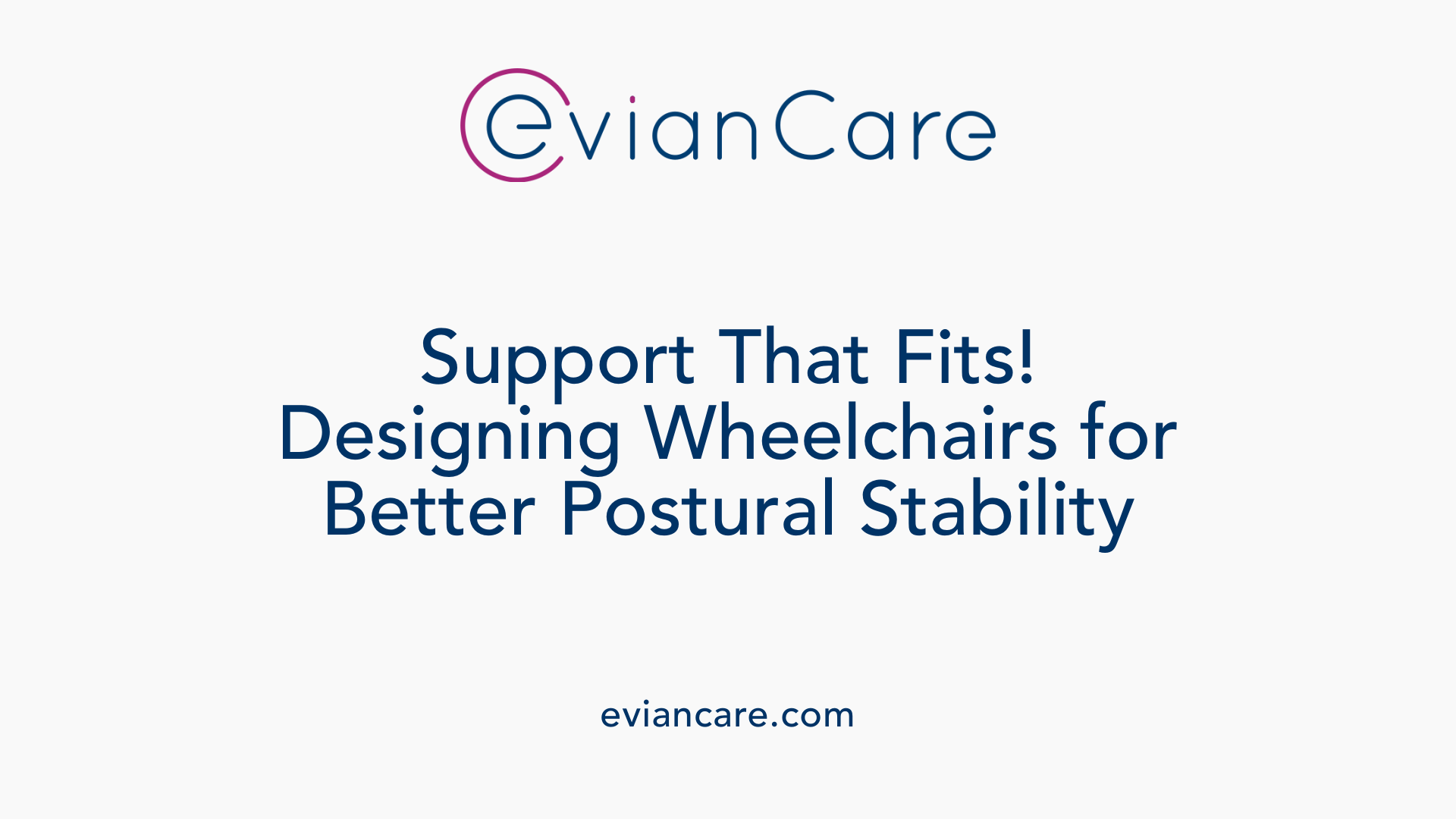
The Essential Role of Physical Therapy in Postural Management for Wheelchair Users
Effective postural management and foundational strength are critical for wheelchair users to maximize mobility, reduce discomfort, and prevent secondary health issues. A comprehensive, evidence-based approach involving tailored exercises, ergonomic adjustments, and continuous reassessment can transform the quality of life for individuals reliant on wheelchairs. This article explores the core techniques, strategies, and therapeutic methods that underpin successful postural strengthening and management in this population.
Targeted Resistance Exercises to Strengthen Core and Upper Body Muscles

What are effective techniques and exercises for building postural strength in wheelchair users?
Building postural strength in wheelchair users heavily relies on targeted resistance exercises that focus on strengthening the core, back, shoulders, and arms. These exercises help improve stability, alignment, and overall mobility, making daily activities easier and more comfortable.
Effective techniques include using resistance bands or light weights to perform seated rows, bicep curls, shoulder presses, and trunk rotations. These movements target key muscle groups responsible for maintaining good posture and support during wheelchair use.
Incorporating functional movements such as seated deadlifts and diagonal lifts can further improve overall strength and body balance. These exercises mimic real-life motions, helping to enhance coordination and body awareness.
Regularly engaging in upper body resistance training at least twice a week, combined with aerobic and flexibility exercises, offers a balanced approach to maintaining physical health.
Adjusting exercises to each individual's unique needs and abilities is essential for safety and effectiveness. Proper technique and gradual progression help prevent injury and promote sustained improvements.
Working with physical therapists or qualified exercise physiologists can provide tailored programs that address specific postural challenges, muscle imbalances, and goals.
Consistent practice emphasizing postural control, core stability, and muscle coordination significantly boosts a wheelchair user's comfort, independence, and physical function.
Below is a table summarizing effective resistance exercises and their primary benefits:
| Exercise | Targeted Muscle Group | Main Benefits | Equipment Needed | Frequency |
|---|---|---|---|---|
| Seated Row | Upper back and shoulders | Posture, upper limb strength | Resistance band or machine | Twice weekly |
| Bicep Curls | Biceps | Arm strength, joint stability | Dumbbells or resistance bands | Twice weekly |
| Shoulder Press | Shoulders, upper arms | Shoulder power, posture | Dumbbells, resistance bands | Twice weekly |
| Trunk Rotations | Core, obliques | Spinal mobility, stability | Resistance band or no equipment | Twice weekly |
| Seated Deadlifts | Back, core | Posture, core strength | Light weights or resistance bands | Twice weekly |
By consistently integrating these exercises into their routines, wheelchair users can foster better posture, reduce discomfort, and achieve greater independence in daily activities.
For personalized guidance and progression, consulting with healthcare professionals ensures exercises are safe and aligned with individual health status. Over time, improving muscle strength through resistance training enhances not just mobility but overall quality of life.
To explore more about resistance exercises tailored for wheelchair users, searching for "resistance exercises for wheelchair users postural strength" can provide valuable resources and programs.
Postural Management Strategies: Customization and Ergonomics

What are evidence-based strategies and guidelines for postural management in wheelchair users?
Effective postural management in wheelchair users is essential for maintaining health, preventing deformities, and ensuring comfort during daily activities. Evidence-based strategies start with comprehensive assessments tailored to each individual's needs. These evaluations focus on identifying postural abnormalities, musculoskeletal concerns, and functional goals.
Following assessment, proper wheelchair configuration and support systems are crucial. This includes selecting adjustable frames, ergonomic cushions, and supportive seating that align with the user’s specific posture. Pressure redistribution components—such as specialized cushions or gel pads—help prevent pressure ulcers and promote skin health.
Incorporating ergonomic principles, like optimal seat height, backrest angle, and axle positioning, reduces strain and improves propulsion efficiency. User training on proper seating and posture maintenance complements physical adjustments, empowering users to manage their position independently.
Strengthening exercises targeting the shoulders, core, and back further support postural stability. Regular reevaluation ensures that the setup evolves with changes in the user’s condition or growth, maintaining its effectiveness.
A holistic approach involves continuous monitoring of pressure points, skin integrity, and musculoskeletal health. Utilizing advanced technology, such as electromyography (EMG) and pressure sensors, provides detailed insights to customize interventions further.
An integrated 24-hour approach considers not just sitting but also lying and sleeping positions. Proper alignment during sleep supports better posture during the day and can prevent secondary musculoskeletal issues.
By adhering to these guidelines, healthcare professionals can craft personalized, effective postural management plans that promote participation, comfort, and overall well-being for wheelchair users.
Therapeutic Approaches and Functional Assessments for Posture Improvement

What therapeutic approaches and assessments can help improve posture and physical health in wheelchair users?
Improving posture and physical health in wheelchair users involves a combination of tailored therapy techniques and detailed assessments. Physical therapy is fundamental, focusing on strengthening weak muscles, stretching tight areas, and manual therapy to correct musculoskeletal imbalances. Exercises tailored to individual needs, like shoulder retraction, core strengthening, and flexibility routines, are essential in maintaining an optimal posture.
Comprehensive seating and postural assessments are critical components. These evaluations identify the best support surfaces, seat cushions, and postural supports—such as pelvic stabilization and trunk supports—that promote spinal alignment and pressure redistribution. Features like tilt-in-space and recline functions can significantly enhance comfort and support, reducing the risk of skin breakdown, contractures, and deformities.
Regular assessment by an interprofessional team—comprised of physical therapists, occupational therapists, and seating specialists—ensures that interventions are effective and adapted as needs change. These evaluations help to set realistic goals, monitor progress, and implement necessary adjustments to the wheelchair setup and exercise routines.
Functional mobility and activity training are also crucial. Educating users on proper weight-shifting techniques and environmental adaptations can prevent injuries, increase independence, and improve overall wellbeing. Strategies such as obstacle navigation and doorway management strengthen control and coordination, enabling safer, more effective movement.
In sum, an integrated, personalized program combining therapy, meticulous assessment, and environmental modifications offers the best pathway to enhance posture, reduce pain, and promote health among wheelchair users.
Enhancing Core Stability and Posture through Specialized Therapy Programs
What are some effective physical therapy programs or methods to enhance core stability and posture in wheelchair users?
Promoting better posture and core strength is essential for wheelchair users to maintain independence, reduce discomfort, and prevent injury. Several tailored physical therapy approaches focus on strengthening the core muscles, improving flexibility, and enhancing functional movement.
Targeted core exercises are fundamental. These include spinal twists, side bends, back extensions, and static holds, which can be adapted based on individual ability. For example, wheelchair users can perform seated spinal twists or back extensions to strengthen spinal muscles and improve stability.
Resistance band workouts are effective tools in this context. Exercises such as ab crunches, oblique crunches, Pallof presses, and back extensions with resistance bands help strengthen abdominal muscles, obliques, and the muscles supporting the spine. These exercises are safe, adjustable, and can be performed from a seated position.
Flexibility and functional movement training also play a vital role. Practices like seated Pilates, torso rotations, pelvic tilts, and stretching routines improve muscle elasticity and joint mobility, which is crucial for maintaining posture and reducing ongoing strain.
Safety is paramount when implementing these exercises. Performing routines under supervision by a trained physical therapist ensures proper alignment and reduces injury risks. Gradually increasing exercise intensity and volume helps build endurance without overexertion.
Incorporating these elements into a comprehensive therapy program can lead to significant improvements in posture, stability, and comfort. Regular participation and ongoing assessments allow for adjustments tailored to individual progress and changing needs.
Ultimately, a consistent, well-rounded approach involving core stabilization, resistance training, and functional movement exercises can dramatically enhance the quality of life for wheelchair users, fostering greater independence and physical well-being.
Educational Resources and Self-Management Strategies
There is a wealth of educational content available to support wheelchair users in maintaining their postural health and overall physical well-being. This includes instructional materials like videos, brochures, and guided exercise programs specifically designed for individuals with mobility challenges.
Many resources are created by healthcare and fitness professionals, such as Dr. Gabby Rivera and Gretchen D’Souza, who specialize in adaptive fitness. These materials focus on safe, effective exercises that help improve core stability, trunk strength, flexibility, and balance. Exercises are often tailored to be performed from seated positions with minimal equipment, making them accessible for most users.
Specifically, instructional videos demonstrate proper techniques for exercises such as seated spinal twists, back extensions, and shoulder retraction. These resources emphasize gradual progression, correct posture, and the importance of consulting healthcare professionals before starting new routines to prevent injury.
In addition to independent learning, many platforms offer guided workout routines and adaptive fitness classes. These group or one-on-one sessions provide professional supervision, ensuring exercises are performed safely and effectively. They also often incorporate holistic wellness approaches, integrating nutrition, mental health strategies, and social engagement.
Furthermore, digital tools like fitness apps and online programs allow users to customize their workouts, track progress, and stay motivated. This support helps individuals to incorporate resistance, flexibility, and endurance exercises into their daily routine, ultimately promoting strength, posture, and independence.
For those interested, searching terms like "postural exercises for wheelchair users educational resources" can lead to valuable guides, tutorials, and community support networks that aid in developing an effective, enjoyable, and sustainable exercise practice.
Integrating Physical Activity into Daily Life for Long-Term Postural Health
 For wheelchair users, seamlessly incorporating physical activity into daily routines is fundamental for maintaining and improving postural health. Developing a structured exercise schedule helps create consistency, which is vital in building long-term habits. These routines should include a blend of resistance training for upper body strength, flexibility exercises to preserve range of motion, and cardiovascular workouts to boost endurance.
For wheelchair users, seamlessly incorporating physical activity into daily routines is fundamental for maintaining and improving postural health. Developing a structured exercise schedule helps create consistency, which is vital in building long-term habits. These routines should include a blend of resistance training for upper body strength, flexibility exercises to preserve range of motion, and cardiovascular workouts to boost endurance.
Setting specific, achievable goals can motivate ongoing engagement. Using reminders, whether through digital apps or physical notes, assists in establishing regular exercise sessions. Tracking progress by journaling or digital logs provides valuable feedback and encourages continued effort.
Functional tasks—such as maneuvering around obstacles, transferring, and door management—naturally involve muscle engagement, coordination, and control. These activities can be incorporated into daily routines, promoting both functional independence and muscular health.
It is equally important for individuals to listen to their bodies. Avoiding overexertion helps prevent fatigue and injuries. Incorporating warm-up and cool-down segments in each routine, along with proper hydration and comfortable clothing, reduces strain.
Regular assessments with healthcare or therapy professionals allow exercises to be tailored to current needs and capabilities. This flexibility ensures ongoing effectiveness and safety, while accommodating physical changes over time.
Ultimately, integrating these physical activities into everyday life yields benefits in posture, strength, mobility, and overall well-being, contributing to a sustained quality of life.
For more ideas, searching for 'daily routine exercises for wheelchair users postural health' can offer practical tips and routines tailored to individual needs.
The Critical Role of Proper Wheelchair Design and Support Systems

How does wheelchair design influence postural stability and musculoskeletal health?
Wheelchair design is a vital factor in maintaining optimal postural stability and supporting musculoskeletal health in users. Properly designed wheelchairs help promote correct body alignment, which can prevent secondary conditions such as musculoskeletal pain, deformities, and fatigue.
Key features like lightweight frames, adjustable seat heights, and ergonomic cushions enable users to sit comfortably and maintain proper posture. These adjustments reduce the strain on joints, muscles, and bones, especially during extended periods of use.
Support systems such as lateral trunk supports, pelvic stabilizers, and tilt-in-space mechanisms are essential for users with compromised trunk control or abnormal muscle tone. They help keep the spine in a neutral position, thereby decreasing the risk of developing kyphosis, scoliosis, or pressure sores.
Impact on musculoskeletal health
When wheelchairs are appropriately tailored to individual needs, they can significantly decrease upper limb load during propulsion and transfers. This customization involves adjusting seat height, axle position, and cushion type, which optimizes biomechanics and reduces shoulder impingement, rotator cuff injuries, and repetitive strain.
Many mobility impairments are associated with musculoskeletal fatigue or injury caused by poorly aligned equipment. Regular assessment and adjustments allow for continuous support, helping prevent overuse injuries and chronic pain syndromes.
Adjustments for aging and medical changes
As individuals age or recover from health conditions, their physical needs change. Age-related factors like decreased muscle strength, joint stiffness, or altered bone density necessitate periodic reevaluation of the wheelchair setup.
Adjustments may include repositioning the seat or backrest, upgrading to lighter or more supportive frames, or incorporating advanced support features like customized cushions or tilt-in-space options. These modifications enhance comfort, reduce the effort required for propulsion, and help prolong mobility.
Proper ergonomic design and support systems are thus crucial in promoting independence, preventing secondary injuries, and improving overall quality of life for wheelchair users.
| Aspect | Details | Additional Benefits |
|---|---|---|
| Wheelchair Frame Design | Lightweight, durable materials, adjustable components | Easier handling, reduced fatigue |
| Support Systems | Lateral trunk supports, pelvic stabilizers, tilt-in-space features | Maintains proper spine alignment, prevents deformities |
| Custom Cushions | Pressure redistribution cushions, customizable to shape and needs | Prevents skin breakdown, increases comfort |
| Reassessment Frequency | Regular evaluations as health or age changes | Ensures ongoing support, minimizes injury risk |
| Ergonomic Adjustments | Seat height, backrest tilt, axle position, support level | Optimizes biomechanics, reduces musculoskeletal stress |
Explore more about wheelchair ergonomic design and its impact on health.
For further information, searching
Reevaluating and Adjusting Postural Interventions Over Time
Why is reevaluation important in postural management for wheelchair users?
Reevaluation plays a crucial role in ensuring the ongoing effectiveness of postural management strategies for wheelchair users. As the body changes over time — whether due to growth, aging, medical treatments, or shifting health conditions — the optimal support and alignment requirements also evolve.
Regular assessments allow healthcare providers to monitor for any postural shifts, discomfort, or signs of developing deformities. This ongoing monitoring helps identify when adjustments are needed in seating configurations, supports, or exercise routines, keeping the user comfortable and reducing the risk of secondary conditions.
Adaptive seating solutions, such as modified cushions, adjustable back supports, or tilt-in-space features, can be tailored to accommodate physical changes. These modifications can improve pressure relief, enhance trunk stability, and prevent issues like skin breakdown or joint pain.
Continual reassessment ensures interventions stay aligned with the user's current needs. It enables timely modifications that support optimal posture, reduce pain, promote better functional ability, and ultimately contribute to the user’s independence and participation in daily activities.
By maintaining an adaptive approach through regular checks and adjustments, healthcare providers can help wheelchair users sustain their mobility, prevent injury, and improve overall quality of life. This proactive management forms a key component of long-term healthcare planning and support.
Empowering Wheelchair Users with Postural Wellness Strategies
Building and maintaining postural strength in wheelchair users requires a multifaceted, personalized approach that integrates targeted exercises, ergonomic wheelchair design, ongoing assessment, and educational support. Collaboration between healthcare professionals, such as physical and occupational therapists, and the individuals themselves is vital for developing effective routines that promote stability, reduce pain, and enhance independence. Emphasizing education, regular reevaluation, and adaptive solutions ensures that postural management evolves with the user’s needs, ultimately fostering a greater quality of life through improved physical health and mobility.
References
- 7 Upper Body Exercises to Help Improve Wheelchair Mobility
- Exercises for Wheelchair Users
- 6 Simple Exercises for Wheelchair Users
- Evidence-Based Strategies for Preserving Mobility ...
- How to Prevent Postural Complications in Wheelchair Users
- Core Strengthening & Stability Exercises for Wheelchair ...
- 6 Core Strength Training Exercises for Wheelchair Users
- 6 Simple Exercises for Wheelchair Users
- 7 Upper Body Exercises to Help Improve Wheelchair Mobility












